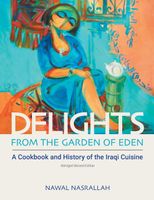Advertisement
Baking with the Medieval Baghdadis
Published 2019
During medieval times, the milling industry flourished in the Islamic world to the extent that water mills were used everywhere (al-Hassan and Hill). This advanced technology made possible the production of a variety of flour grades, the most important of which were white flour and semolina (samid, derived from the Akkadian ‘samidu’). The outcome was a myriad of breads that adorned the tables of the caliphs and commoners alike. Hospitality was judged by how much bread was served with the meal. Aesthetically, the beauty of the khiwan (dining table) was measured by the number and variety of breads displayed on it. Writing from thirteenth-century Andalusia, the anonymous writer of the cookbook Anwa’ al-Saydala commended the caliphs of al-Mashriq (the Abbasid caliphate, the center of which was Baghdad) for their love of bread. They would command their bakers to make a variety of breads, beautifully displayed on a huge tray called tabaq al-‘ardh (display tray), and they would choose as their appetites dictated. He also says they made many kinds of bread and gave each of them a specific name.

